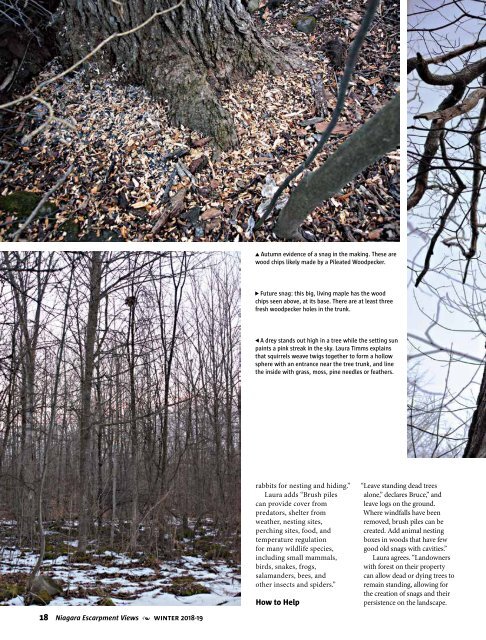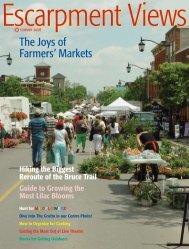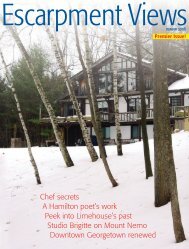Winter 2018 19 NEViews
Create successful ePaper yourself
Turn your PDF publications into a flip-book with our unique Google optimized e-Paper software.
Autumn evidence of a snag in the making. These are<br />
wood chips likely made by a Pileated Woodpecker.<br />
Future snag: this big, living maple has the wood<br />
chips seen above, at its base. There are at least three<br />
fresh woodpecker holes in the trunk.<br />
A drey stands out high in a tree while the setting sun<br />
paints a pink streak in the sky. Laura Timms explains<br />
that squirrels weave twigs together to form a hollow<br />
sphere with an entrance near the tree trunk, and line<br />
the inside with grass, moss, pine needles or feathers.<br />
rabbits for nesting and hiding.”<br />
Laura adds “Brush piles<br />
can provide cover from<br />
predators, shelter from<br />
weather, nesting sites,<br />
perching sites, food, and<br />
temperature regulation<br />
for many wildlife species,<br />
including small mammals,<br />
birds, snakes, frogs,<br />
salamanders, bees, and<br />
other insects and spiders.”<br />
How to Help<br />
“Leave standing dead trees<br />
alone,” declares Bruce,” and<br />
leave logs on the ground.<br />
Where windfalls have been<br />
removed, brush piles can be<br />
created. Add animal nesting<br />
boxes in woods that have few<br />
good old snags with cavities.”<br />
Laura agrees. “Landowners<br />
with forest on their property<br />
can allow dead or dying trees to<br />
remain standing, allowing for<br />
the creation of snags and their<br />
persistence on the landscape.<br />
18 Niagara Escarpment Views • winter <strong>2018</strong>-<strong>19</strong>
















